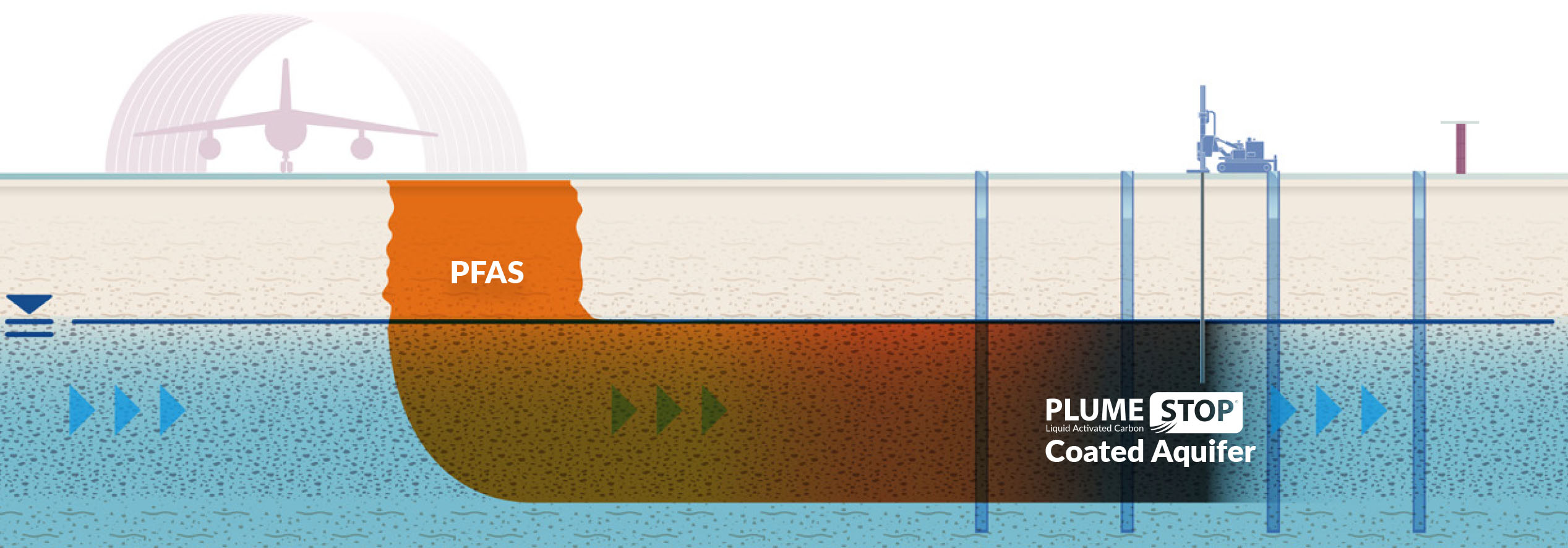Ingenious PFAS Treatment Solutions for Safer Water
The increasing frequency of PFAS contamination in water supplies necessitates a crucial exam of innovative treatment services. Furthermore, arising bioremediation techniques provide an even more lasting strategy to tackling PFAS obstacles. pfas management.
Review of PFAS Contamination
PFAS contamination has arised as a significant ecological and public health problem. Per- and polyfluoroalkyl compounds (PFAS) are a team of artificial chemicals understood for their perseverance in the setting and human body, leading them to be commonly referred to as "forever chemicals." These compounds have actually been widely used in numerous sectors, including firefighting foams, water-repellent textiles, and food product packaging, mainly because of their water- and grease-resistant properties.
The prevalent use PFAS has actually resulted in their discovery in dirt, water supplies, and also in the blood of humans and pets. Researches have actually connected PFAS exposure to many wellness problems, including developmental results in babies, body immune system dysfunction, and various kinds of cancer cells. In addition, the ecological persistence of these substances complicates their degradation and removal, raising concerns regarding lasting eco-friendly effects.
Governing bodies are progressively implementing rigid standards to check and lower PFAS degrees in drinking water and various other environmental mediums. As awareness of PFAS contamination expands, it has become imperative for communities and industries to seek reliable therapy options to reduce direct exposure and safeguard public wellness.
Advanced Filtering Technologies
As the seriousness to resolve PFAS contamination heightens, advanced filtering innovations have actually arised as an essential part in the remediation efforts aimed at removing these relentless chemicals from water sources. These technologies leverage sophisticated mechanisms to properly target and record PFAS substances, which are infamously immune to traditional treatment approaches.
One of one of the most appealing approaches is the usage of granular turned on carbon (GAC), which adsorbs PFAS particles because of its high surface and permeable framework. This approach has actually been commonly implemented in both municipal and commercial settings, demonstrating considerable reductions in PFAS concentrations. Furthermore, ion exchange materials have actually gotten traction, especially created to uniquely bind PFAS ions from water, hence facilitating their removal.
Membrane layer filtration innovations, such as reverse osmosis and nanofiltration, additionally reveal efficacy in PFAS elimination by literally dividing impurities from water - pfas management. These systems can accomplish high degrees of pureness, making them appropriate for drinking water applications
Chemical Treatment Advancements
Many chemical therapy advancements are being checked out to properly deal with PFAS contamination in water materials. One promising technique includes using sophisticated oxidation procedures (AOPs), which utilize powerful oxidants such as ozone, hydrogen peroxide, or chlorine dioxide integrated with UV light to break down PFAS substances right into much less damaging substances. This method has demonstrated efficacy in laboratory settings, showing possible for scalability in real-world applications.
One more cutting-edge method is the growth of ion-exchange materials specifically Read Full Article made to target PFAS. These resins can uniquely adsorb PFAS compounds from water, permitting their removal during treatment procedures. Current advancements have enhanced the effectiveness and capacity of these resins, making them a favorable option for water therapy centers.
In addition, researchers are investigating using chemical representatives like persulfate and ferrous ions to boost the deterioration of PFAS in contaminated water. These agents can induce chemical reactions that help with the breakdown of consistent PFAS substances.
Emerging Bioremediation Methods
Recent developments in chemical treatment technologies have led the means for discovering bioremediation strategies as a viable option for addressing PFAS contamination. Bioremediation uses the all-natural metabolic procedures of bacteria to weaken or transform toxins, making it an attractive strategy for dealing with persistent contaminants like PFAS.
Emerging methods in bioremediation consist of making use of genetically crafted microbes that can particularly target and break down PFAS compounds. These microbial pressures are being developed for their enhanced degradation capacities, boosting the performance of the removal procedure. Additionally, researchers are investigating the potential of plant-assisted bioremediation, where specific plant varieties might uptake and withdraw PFAS from infected soil and water.
One more encouraging approach is the application of bioaugmentation, which includes presenting valuable bacteria into infected settings to increase the degradation of PFAS. This approach can facilitate much faster remediation timelines and improve overall effectiveness.

Regulative Structures and Standards
An extensive regulative framework is vital for effectively managing PFAS contamination and making certain public health protection. The enhancing acknowledgment of per- and polyfluoroalkyl compounds (PFAS) as toxic wastes has motivated numerous federal and state companies to develop criteria that regulate their visibility in water products. The United State Environmental Defense Company (EPA) has actually developed wellness advisories and is functioning toward establishing enforceable restrictions for PFAS in drinking water.
State-level regulations differ substantially, with some states adopting more stringent standards than those suggested by the EPA. These regulations frequently include maximum impurity levels (MCLs) for particular PFAS compounds, surveillance demands, and reporting obligations for this article water energies. In addition, arising frameworks concentrate on the removal of contaminated sites, emphasizing the requirement for effective therapy innovations.

Conclusion
To conclude, the development and implementation of ingenious PFAS therapy solutions are essential for addressing the pervasive concern of water contamination. Advanced purification technologies, chemical treatments, and arising bioremediation methods collectively provide a complex technique to efficiently decrease and degrade PFAS levels. As regulatory structures proceed to progress, integrating these modern technologies will be crucial to guard public health and wellness and recover the stability of contaminated water resources, ultimately adding to a cleaner and more secure atmosphere.